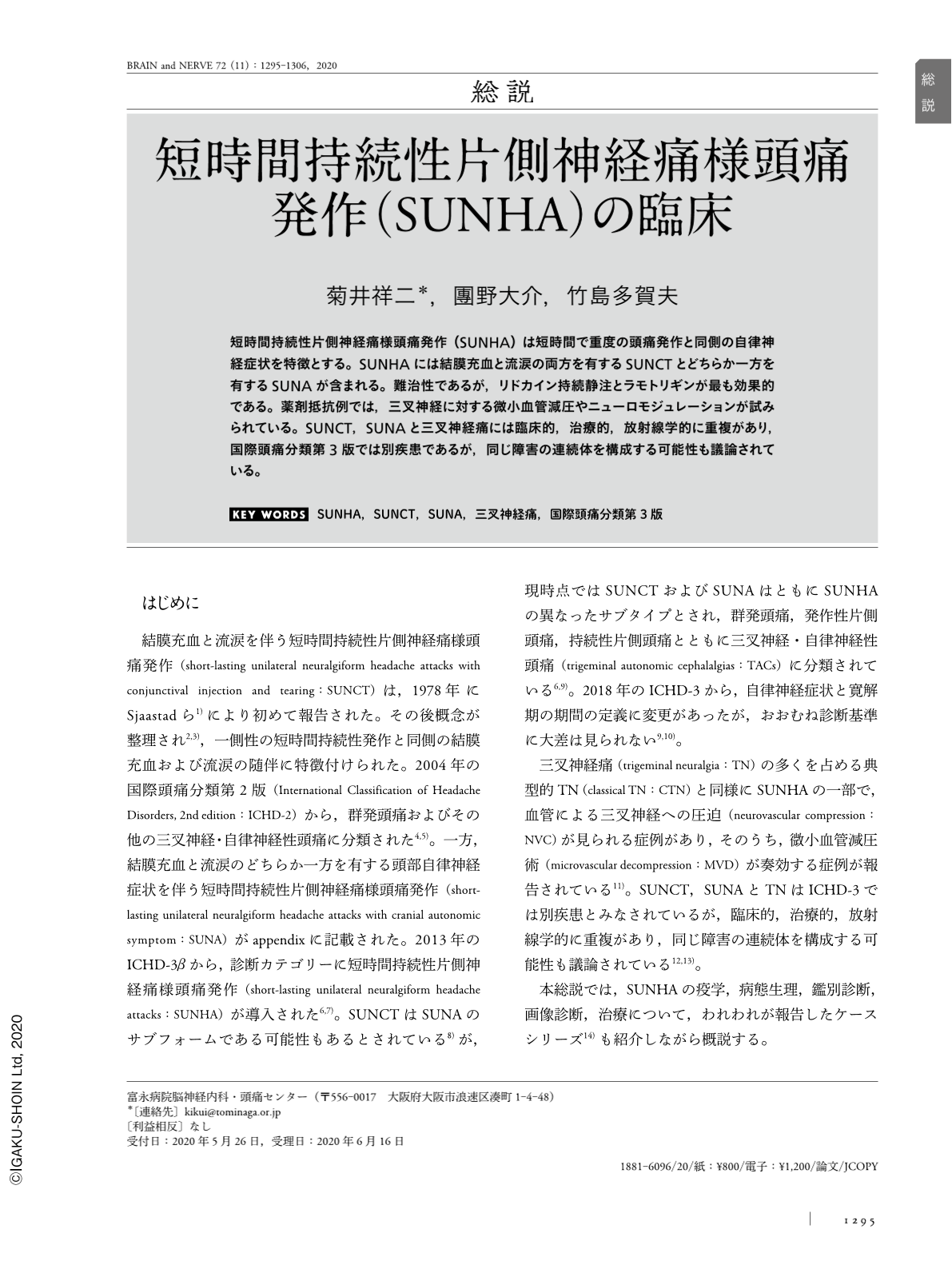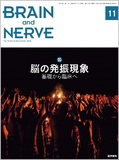Japanese
English
- 有料閲覧
- Abstract 文献概要
- 1ページ目 Look Inside
- 参考文献 Reference
短時間持続性片側神経痛様頭痛発作(SUNHA)は短時間で重度の頭痛発作と同側の自律神経症状を特徴とする。SUNHAには結膜充血と流涙の両方を有するSUNCTとどちらか一方を有するSUNAが含まれる。難治性であるが,リドカイン持続静注とラモトリギンが最も効果的である。薬剤抵抗例では,三叉神経に対する微小血管減圧やニューロモジュレーションが試みられている。SUNCT,SUNAと三叉神経痛には臨床的,治療的,放射線学的に重複があり,国際頭痛分類第3版では別疾患であるが,同じ障害の連続体を構成する可能性も議論されている。
Abstract
Short-lasting unilateral neuralgiform headache attacks (SUNHA), within the group of trigeminal autonomic cephalalgias, are characterized by repetitive, brief and severe attacks. The SUNHA includes short-lasting unilateral neuralgiform headache attacks with conjunctival injection and tearing (SUNCT) and short-lasting unilateral neuralgiform headache attacks with cranial autonomic symptoms (SUNA). SUNCT is diagnosed if both conjunctival injection and tearing occur ipsilateral to the pain, whereas SUNA is diagnosed if only one, or neither, of conjunctival injection and tearing occurs. Previously considered to be rare and rather refractory to treatment, there is increasing awareness of this syndrome and the therapeutic possibilities. During the worst periods, intravenous lidocaine may decrease the intensity of SUNHA. Lamotrigine is the most-effective prophylactic treatment. For medically intractable SUNHA, several surgical approaches, i.e., microvascular decompression of the trigeminal nerve and neuromodulation, have been tried. There is considerable clinical, therapeutic and radiological overlap between SUNCT, SUNA, and trigeminal neuralgia. Despite being considered distinct conditions, the emerging evidence suggests a broader nosological concept of SUNCT, SUNA, and trigeminal neuralgia; these conditions may constitute a continuum of the same disorder, rather than separate clinical entities. This article discusses the clinical aspects of the syndrome, including pathophysiology, differential diagnosis, radiological imaging and treatment.
(Received May 26, 2020; Accepted June 16, 2020; Published November 1, 2020)

Copyright © 2020, Igaku-Shoin Ltd. All rights reserved.


